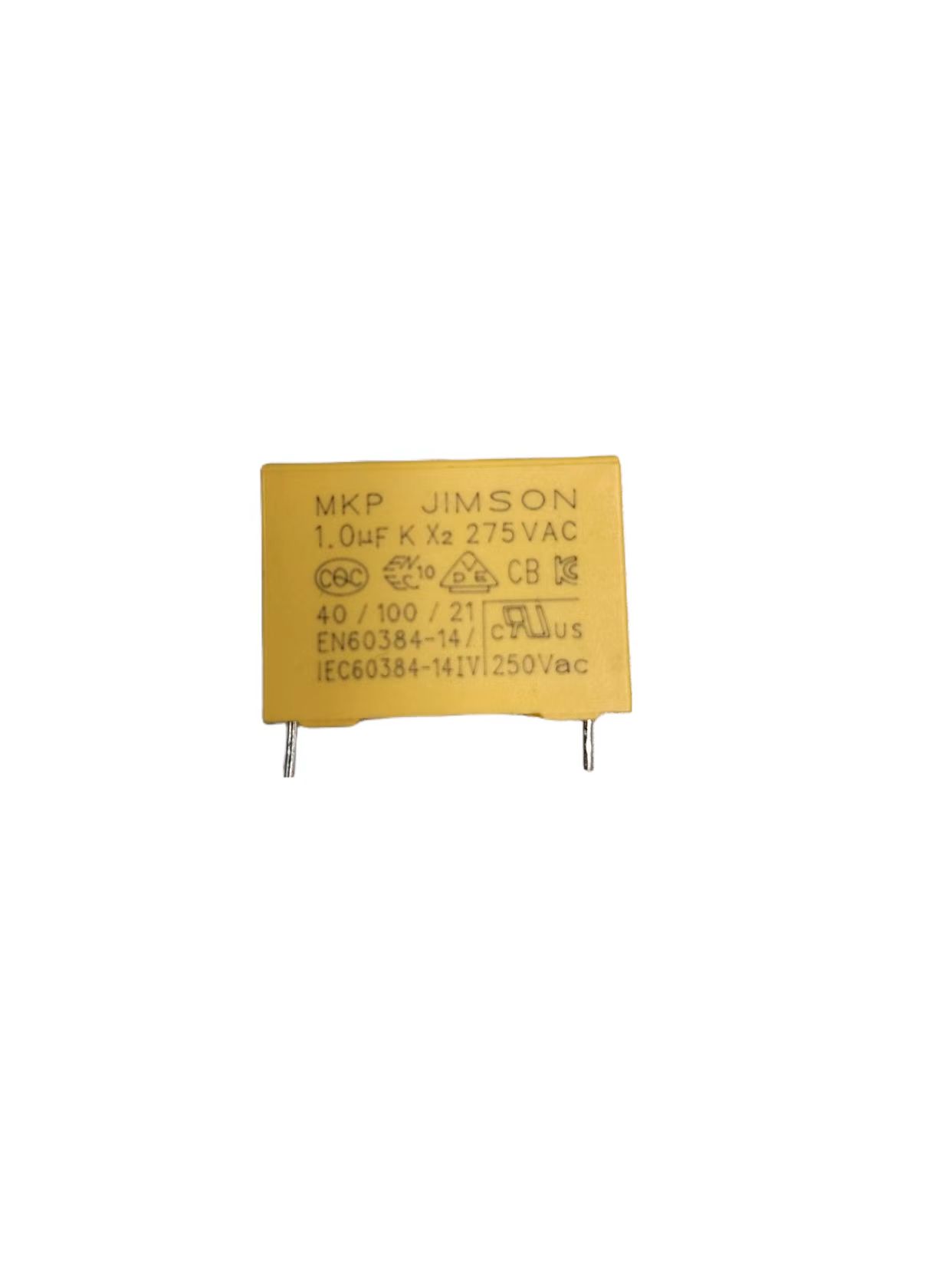In the ever-evolving landscape of electronics, where components are becoming increasingly compact and advanced, axial film capacitors stand out as unassuming yet vital elements that play a pivotal role in the performance and reliability of various electronic devices. These capacitors, often overshadowed by their more high-profile counterparts, have quietly carved a niche for themselves in diverse applications across industries. In this comprehensive exploration, we will delve deep into the world of axial film capacitors, understanding their construction, working principles, advantages, and the myriad domains where they exert their significant influence.
The Anatomy of Axial Film Capacitors
Axial film capacitors belong to the broader category of film capacitors, a passive electronic component widely used for storing and releasing electrical energy in circuits. They derive their name from the arrangement of their electrodes—parallel metal plates separated by a dielectric film. While the concept of film capacitors is straightforward, it’s the nuances of construction and materials that make axial film capacitors distinctive.
1. Dielectric Materials
The dielectric material within an axial film capacitor serves as an insulator between the capacitor’s electrodes. This dielectric material is crucial for the capacitor’s performance. Common dielectric materials used in axial film capacitors include:
a. Polyester (Mylar)
Polyester film capacitors are known for their stability, low cost, and broad capacitance range. They find applications in audio circuits, power supplies, and motor control.
b. Polypropylene
Polypropylene film capacitors offer excellent electrical characteristics, including low dielectric absorption and high insulation resistance. They are commonly used in high-performance audio systems and precision applications.
c. Polyethylene
Polyethylene capacitors are known for their high dielectric constant, making them suitable for applications requiring high capacitance values in a compact form factor.
d. Polycarbonate
Polycarbonate film capacitors offer good temperature stability and are often used in applications where precision and stability are essential.
2. Electrode Materials
The electrodes in axial film capacitors are typically made of metal foils, with aluminum and zinc being the most commonly used materials. The choice of electrode material can impact the capacitor’s performance characteristics, such as equivalent series resistance (ESR) and equivalent series inductance (ESL). Aluminum electrodes are more common due to their cost-effectiveness and performance.
3. Construction
Axial film capacitors are so named because their leads extend axially from each end of the capacitor body. This construction allows for easy through-hole mounting on printed circuit boards (PCBs). The capacitor body is often cylindrical, with the dielectric material and electrodes rolled into a compact package. Leads are typically made of tinned wire for soldering onto the PCB.
Working Principles of Axial Film Capacitors
To appreciate the impact of film capacitors, it’s essential to understand how they function within electronic circuits. These capacitors store energy in an electric field and release it when needed. When voltage is applied across the capacitor, it charges, storing electrical energy. This energy can then be discharged back into the circuit when necessary.
The capacitance of a capacitor, measured in farads (F), determines its ability to store energy. Axial film capacitors are available in a wide range of capacitance values, from picofarads (pF) to microfarads (µF), allowing them to serve various functions in electronic circuits.
Axial film capacitors are primarily used for the following functions:
1. Coupling and Decoupling
One of the most common applications of film capacitors is coupling and decoupling signals in electronic circuits. They are used to block DC voltage while allowing AC signals to pass through. This is vital in amplifiers and audio circuits, where DC voltage can interfere with signal integrity.
2. Timing and Frequency Control
Axial film capacitors are employed in timing circuits to determine the frequency of oscillators and timers. Their stable capacitance values make them ideal for precision timing applications.
3. Energy Storage and Filtering
In power supply circuits, film capacitors store energy and help smooth out voltage fluctuations. This filtering action ensures that electronic devices receive a stable and ripple-free power supply.
4. Motor Start and Run
Film capacitors find use in motor control applications, where they assist in starting and running single-phase induction motors. Their high insulation resistance and stable capacitance are advantageous in this context.
Advantages of Axial Film Capacitors
Despite their unassuming appearance, film capacitors offer several advantages that contribute to their widespread adoption in diverse applications:
1. High Reliability
Axial film capacitors are known for their reliability and long operational lifetimes. Their construction using high-quality materials and precise manufacturing processes ensures consistent performance over time.
2. Low Equivalent Series Resistance (ESR)
Low ESR is a critical characteristic in capacitors, especially in high-frequency applications. Film capacitors typically exhibit low ESR values, making them suitable for filtering and decoupling in such scenarios.
3. High Voltage Ratings
Many axial film capacitors are available with high voltage ratings, making them suitable for use in high-power applications and circuits that require voltage isolation.
4. Precision and Stability
Film capacitors excel in applications that demand precision and stability, such as audio circuits, where they contribute to high-quality sound reproduction.

Axial Film Capacitors in Various Applications
The versatility and reliability of film capacitors make them indispensable in a wide range of industries and applications. Let’s explore some of the domains where these unassuming components make a big impact:
1. Consumer Electronics
In consumer electronics, axial film capacitors are found in televisions, audio equipment, and power supplies. They contribute to clear audio quality, stable power delivery, and reliable performance.
2. Automotive Electronics
Modern vehicles rely on numerous electronic systems, and film capacitors play a role in ensuring the proper functioning of these systems. They are used in engine control units (ECUs), infotainment, and safety systems.
3. Industrial Automation
Industrial automation systems demand robust and reliable components. Axial film capacitors are used in motor drives, control panels, and sensor circuits to maintain precision and stability in critical processes.
4. Renewable Energy
In renewable energy applications, such as solar inverters and wind turbine controllers, film capacitors assist in converting and managing electrical energy efficiently.
5. Aerospace and Defense
Axial film capacitors are utilized in aerospace and defense applications, including radar systems, communication equipment, and guidance systems, where reliability and performance under extreme conditions are non-negotiable.
Selecting the Right Axial Film Capacitor
Choosing the appropriate axial film capacitor for a specific application requires careful consideration of various factors:
1. Capacitance Value
The required capacitance value depends on the application. Smaller values are suitable for coupling and filtering, while larger values are needed for energy storage and smoothing.
2. Voltage Rating
Ensure that the selected capacitor has a voltage rating that exceeds the maximum voltage in the circuit to prevent breakdown.
3. Temperature Rating
Consider the operating temperature range of the application and select capacitors with appropriate temperature ratings to ensure stable performance.
4. ESR and ESL
For high-frequency applications, pay attention to the equivalent series resistance (ESR) and equivalent series inductance (ESL) of the capacitor. Lower values of ESR and ESL are desirable in such scenarios.
5. Dielectric Material
Choose the dielectric material that suits the specific requirements of your application. Polyester, polypropylene, polyethylene, and polycarbonate offer varying characteristics in terms of stability, insulation resistance, and dielectric constant.
6. Size and Form Factor
Consider the physical constraints of your PCB or device when selecting an axial film capacitor. They are available in different sizes and form factors to accommodate various designs.
7. Longevity
For applications where reliability is paramount, select capacitors from reputable manufacturers known for producing high-quality, durable components.
Future Trends in Axial Film Capacitors
As electronics continue to miniaturize and demand higher performance, film capacitors are not immune to innovation. Several trends are shaping the future of these capacitors:
1. Miniaturization
The push for smaller and more compact electronic devices will lead to the development of smaller film capacitors with improved performance characteristics.
2. Enhanced Capacitance Density
Researchers are working on increasing the capacitance density of film capacitors, allowing for more energy storage in a smaller footprint.
3. Integration with Advanced Materials
Incorporating advanced materials into axial film capacitors can enhance their electrical properties and overall performance.
4. Environmental Considerations
Environmental concerns are driving the development of more eco-friendly materials and manufacturing processes for capacitors.
Conclusion
Axial poyester film capacitors may be small components in the world of electronics, but their impact is undeniably significant. From consumer electronics to aerospace and defense applications, these unassuming devices play a crucial role in ensuring the reliability, stability, and performance of electronic circuits. As technology continues to advance, so too will the capabilities and applications of film capacitors. By understanding their construction, working principles, advantages, and diverse uses, engineers and electronics enthusiasts can harness the full potential of these small components with a big impact. Whether you’re designing the next generation of electronics or simply seeking to optimize existing circuits, the reliability and versatility of axial film capacitors make them an essential tool in your electronic toolkit.
Related Products






